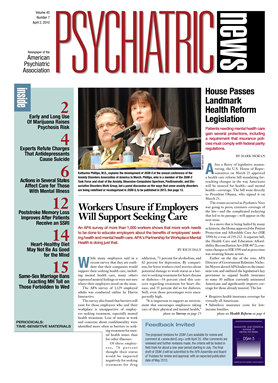In 2004, a one-third decrease in the alcohol tax led to a significant drop in the prices of alcoholic beverages in Finland. As a result, total alcohol consumption in that country leapt by 10 percent.
In a study published online in Alcohol and Alcoholism on February 16, Satu Helakorpi and colleagues at the Finnish National Institute for Health and Welfare demonstrated that the price reduction indeed had an impact on the prevalence of heavy drinking and binge drinking, but that impact might be limited to certain age, gender, and socioeconomic groups.
In this study, self-reported drinking was collected through a nationally representative survey mailed annually to 5,000 randomly selected Finnish citizens.
The percentage of people who reported moderate to heavy alcohol consumption increased steadily from the 1980s through 2008. After 2004, moderate to heavy drinking increased significantly among people aged 45 to 64 but not in people aged 25 to 44.
In this study, the authors defined moderate to heavy alcohol consumption as eight or more drinks for men and five or more drinks for women per week. These cutoff points were, the authors admitted, “quite low.” However, as self-reported drinking quantities are often underestimated, they felt the criteria were justified.
Similarly, binge drinking also went up significantly among people aged 45 to 64 after 2004, but did not change as much among people aged 25 to 44. Binge drinking was defined, for men, as six or more drinks on one occasion at least once a week and, for women, six or more drinks on one occasion at least once a month.
With statistical adjustment for age, the prevalence of heavy drinking and binge drinking increased after 2004 in men with the lowest level of education, but not in those with higher education levels. In contrast, the authors found that binge drinking increased more rapidly in women with intermediate and high levels of education after 2004.
That drinking behaviors are often sensitive to alcohol prices is not a surprise, according to Mark Willenbring, M.D., an addiction psychiatrist in St. Paul, Minn. “That increased consumption was greater among low-income people is to be expected. They have less disposable income [to buy alcohol],” he said. Thus, a price drop allowed for greater consumption.
Willenbring was director of treatment and recovery research at the National Institute on Alcohol Abuse and Alcoholism before his recent retirement.
The findings on age effect differed from most similar studies, which show more price sensitivity among young people—presumably because they have less money to spend on alcohol—Willenbring noted. The authors provided no explanation for the observation that older Finnish drinkers appeared to have a higher sensitivity to alcohol price and did not respond to inquiries. This study examined the drinking patterns in working-age adults and did not include individuals under age 25.
